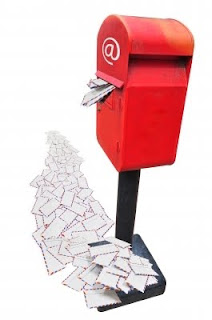 Virtually every business in the U.S. uses email to market its products to consumers. The lower costs and almost instantaneous delivery of information are only a couple of the many benefits online communication provides marketers.
Virtually every business in the U.S. uses email to market its products to consumers. The lower costs and almost instantaneous delivery of information are only a couple of the many benefits online communication provides marketers.However, the ease and efficiency of e-mail marketing also brings drawbacks. Many consumers find unsolicited commercial e-mail messages (spam) annoying and time-consuming. Individual marketers must spend more time and money to create commercial messages that stand out from thousands of others.
In an effort to regulate unsolicited commercial e-mail, Congress enacted the Controlling the Assault of Non-Solicited Pornography and Marketing Act (15 U.S.C. § 7701-13) (CAN-SPAM Act) in 2003. The Act does not flatly prohibit all unsolicited commercial e-mail. Instead, it establishes requirements for commercial messages, gives recipients the right to have you stop emailing them, and spells out tough penalties for violations.
Despite its name, the CAN-SPAM Act doesn’t apply just to bulk email. It covers all commercial messages, which the law defines as “any electronic mail message the primary purpose of which is the commercial advertisement or promotion of a commercial product or service,” including email that promotes content on commercial websites. The law makes no exception for business-to-business email. That means all email – for example, a message to former customers announcing a new product line – must comply with the law.
Each separate email in violation of the CAN-SPAM Act is subject to penalties of up to $16,000, so non-compliance can be costly. The main practical tips for CAN-SPAM Act compliance are set out below:
(1) Don’t use false or misleading header information. Your “From,” “To,” “Reply-To,” and routing information – including the originating domain name and email address – must be accurate and identify the person or business who initiated the message.
(2) Don’t use deceptive subject lines. The subject line must accurately reflect the content of the message. The law gives you a lot of leeway in how to do this, but you must disclose clearly and conspicuously that your message is an advertisement.
(3) Tell recipients where you’re located. Your message must include your valid physical postal address (current street address, a post office box, etc.).
(4) Tell recipients how to opt out of receiving future email from you. Your message must include a clear and conspicuous explanation of how the recipient can opt out of getting email from you in the future.
(5) Honor opt-out requests promptly. Any opt-out mechanism you offer must be able to process opt-out requests for at least 30 days after you send your message. You must honor a recipient’s opt-out request within 10 business days.
(6) Monitor what others are doing on your behalf. The law makes clear that even if you hire another company to handle your email marketing, you can’t contract away your legal responsibility to comply with the law. Both the company whose product is promoted in the message and the company that actually sends the message may be held legally responsible.
Note: When sending commercial messages to wireless devices additional requirements must be observed. Also, companies using e-mail as marketing and advertisement tool must insure compliance with other laws addressing marketing and advertising practices.
For more information on CAN-SPAM Act compliance, please click here.
More legal updates and information can be found on our website!
(c) Picture: Patchareeya99 - freedigitalphotos.net


No comments:
Post a Comment